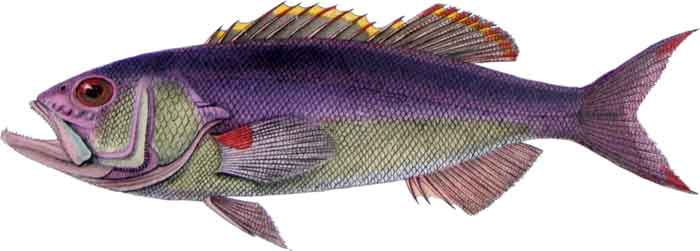Superregnum: Eukaryota
Cladus: Unikonta
Cladus: Opisthokonta
Cladus: Holozoa
Regnum: Animalia
Subregnum: Eumetazoa
Cladus: Bilateria
Cladus: Nephrozoa
Superphylum: Deuterostomia
Phylum: Chordata
Subphylum: Vertebrata
Infraphylum: Gnathostomata
Megaclassis: Osteichthyes
Superclassis/Classis: Actinopterygii
Classis/Subclassis: Actinopteri
Subclassis/Infraclassis: Neopterygii
Infraclassis: Teleostei
Megacohors: Osteoglossocephalai
Supercohors: Clupeocephala
Cohors: Euteleosteomorpha
Subcohors: Neoteleostei
Infracohors: Eurypterygia
Sectio: Ctenosquamata
Subsectio: Acanthomorphata
Divisio/Superordo: Acanthopterygii
Subdivisio: Percomorphaceae
Series: Eupercaria
Ordo: Perciformes
Subordo: Percoidei
Superfamilia: Percoidea
Familia: Serranidae
Subfamilia: Epinephelinae
Genus: Paranthias
Species: P. colonus – P. furcifer
Name
Paranthias Guichenot, 1868
References
Paranthias – Taxon details on Integrated Taxonomic Information System (ITIS).
Paranthias species list in FishBase,
Froese, R. & Pauly, D. (eds.) 2024. FishBase. World Wide Web electronic publication, www.fishbase.org, version 02/2024.
Vernacular names

Paranthias furcifer
Paranthias is a genus of marine ray-finned fish, groupers from the subfamily Epinephelinae, part of the family Serranidae, which also includes the anthias and sea basses. They are found in the Atlantic Ocean and the eastern Pacific Ocean.
Characteristics
The species in the genus Paranthias are unique among the groupers in that they have a relatively small mouth, the upper jaw being more protrusible than that of other groupers, with small teeth and many elongated gill rakers, and a fusiform body which ends in a deeply forked caudal fin. These departures from the more normal morphology of groupers are adaptations for feeding on zooplankton in open water. They are visual hunters which pick off zooplankton from the middle of the water column and they have a relatively short snout which allows them to employ binocular vision. They are social fish which are normally seen in diurnal feeding aggregations, diving to shelter in the reef when threatened.[2] They reach a maximum total length of 30–36 centimetres (12–14 in).[3]
Distribution
The two species in the genus Paranthias each occur in different oceans, the creole-fish (P. furcifer) is found mainly in the warmer waters of the western Atlantic Ocean but its range extends to Ascension Island and the islands in the Gulf of Guinea in the eastern Atlantic. The Pacific creole-fish occurs in the tropical and subtropical eastern Pacific Ocean.[2]
Taxonomy
The genus Paranthias was created in 1863 by the American ichthyologist Theodore Nicholas Gill (1837–1914) as a monotypic genus containing only the type species Serranus furcifer[1] and for a long period the Pacific creole-fish was considered conspecific with the creole-fish.[2]
Species
It contains the following species:[3]
Paranthias colonus (Valenciennes, 1846) (Pacific creole-fish)
Paranthias furcifer (Valenciennes, 1828) (Creole-fish)
References
Eschmeyer, William N.; Fricke, Ron & van der Laan, Richard (eds.). "Paranthias". Catalog of Fishes. California Academy of Sciences. Retrieved 29 July 2020.
Heemstra, P.C. & J.E. Randall (1993). FAO Species Catalogue. Vol. 16. Groupers of the world (family Serranidae, subfamily Epinephelinae). An annotated and illustrated catalogue of the grouper, rockcod, hind, coral grouper and lyretail species known to date (PDF). FAO Fish. Synopsis. Vol. 125. FAO, Rome. pp. 281–282. ISBN 92-5-103125-8.
Froese, Rainer and Pauly, Daniel, eds. (2019). Species of Paranthias in FishBase. December 2019 version.
Retrieved from "http://en.wikipedia.org/"
All text is available under the terms of the GNU Free Documentation License

